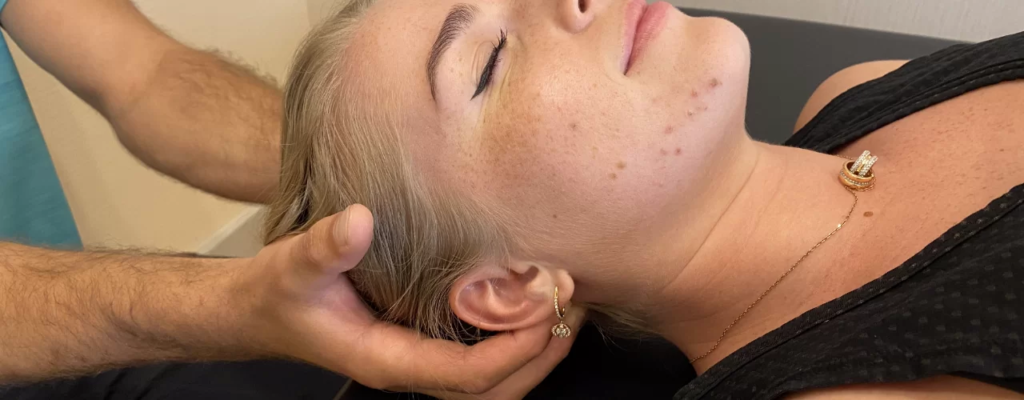The science of medicine and healing comprises a wide range of treatments with a common purpose of reducing pain and facilitating recovery. Many alternative medicine treatments use an external stimulation to help the body heal faster by tapping into and enhancing its natural healing abilities. Craniosacral therapy (CST) is one such treatment that chiropractors, physical and occupational therapists, and osteopaths can use as an adjuvant. Even though craniosacral therapy is becoming more popular as a treatment option in physical therapy clinics in New York and worldwide, many individuals have never heard of it.

Understanding About Craniosacral Therapy
After the late Dr John Upledger (an osteopathic physician) began exploring the health advantages of craniosacral therapy at Michigan State University in the 1970s, it became popular. Craniosacral therapy is a gentle, hands-on holistic treatment that promotes profound relaxation and well-being by working directly with the body’s central nerve system.
The physical therapist examines the cerebrospinal fluid’s slight movement around the skull, spine, and sacrum in more detail. Because irregularities or anomalies in cerebrospinal fluid rhythm might have broader consequences for overall health, the physical therapist strives to promote the cerebrospinal fluid flow freely and effectively through the meninges.
Importance Of Cerebrospinal Fluid
The circulation of cerebrospinal fluid in the meninges has been dubbed “the breath of life,”emphasising its significance. The cerebrospinal fluid serves three purposes in the human body.
- It acts as a “cushion” to protect the brain and spine from physical damage.
- It aids in the circulation of vital nutrients and molecules to the brain.
- It helps preserve brain health and optimal functioning by removing metabolic waste products from the brain.
These functions are kept effective by a rhythmic, unrestricted circulation of the cerebrospinal fluid, which directly impacts the central nervous system’s performance.
A “Whole-Body Treatment”
The average craniosacral therapy session lasts 45 minutes to an hour. During treatment, the therapist gently places his or her hands on the client (no more than the pressure of a nickel). To detect the tiny movement of the cerebrospinal fluid and identify flow blockages, the physical therapist must apply light pressure.
Restrictions in the body’s soft tissues, such as the muscles or fascia, are frequently discovered by the therapist. Because craniosacral therapy treatment is generally relaxing, it induces deep relaxation in both the mind and the body. The most typical sensations reported by patients during and after therapy are deep relaxation, mental clarity, and an overall sense of well-being. It’s also possible that the client has an emotional release, which is a reaction to physical cues of emotional anguish; these reactions are entirely natural and considered part of the healing process.
Craniosacral Therapy Helpful For Conditions:
- Migraine and headaches
- Chronic pain
- Central nervous system disorders
- Colic
- Motor-coordination impairments
- Concussions and traumatic brain injuries
- Alzheimer’s disease and dementia
- Spinal cord injuries
- Scoliosis
- Chronic fatigue
- Fibromyalgia and connective tissue disorders
- TMJ dysfunction
- Neurovascular or immune disorders
- PTSD, and more…
Craniosacral Therapy Helps With Trauma Recovery
A neural system that has been restructured in an imbalanced fashion as a result of its failure to assimilate a traumatic experience is frequently the fundamental cause of mental diseases or addictions. When we are confronted with a traumatic event or anything that our brains perceive as life-threatening, we have three options: fight, flight, or freeze. Our bodies are flooded with energy, such as adrenaline, in order to prepare for any of these alternatives. We’ll need time to discharge this energy once the threat has passed. Survivors of trauma are frequently unable to effectively release this stored energy, which causes the nervous system not to be regulated over time.
We can become less able to cope with the typical ups and downs of life when our nervous system is dysregulated, overreacting or underreacting in emotional situations. Hypervigilance and a high susceptibility to triggers – noises, odours, a similar person or circumstance, etc. – can keep the energy engaged long after the traumatic incident has passed. Because the energy that was unable to be evacuated following the trauma has remained in our limbic system, we cannot access it intellectually, rendering traditional talking therapy pointless until we can help the body discharge this energy in another way.
Concluding Thoughts!!!
It’s vital not to dismiss approaches like Craniosacral therapy entirely because of a lack of evidence. Opening our minds to additional treatment options and alternative medicine will only help us push past the limits we’ve set for ourselves, both professionally and personally. On the other hand, craniosacral therapy has a low risk of causing harm, and some people may benefit from it, particularly in terms of stress and anxiety reduction at a physical therapy clinic, New York.
